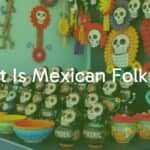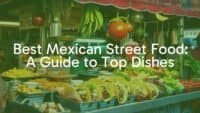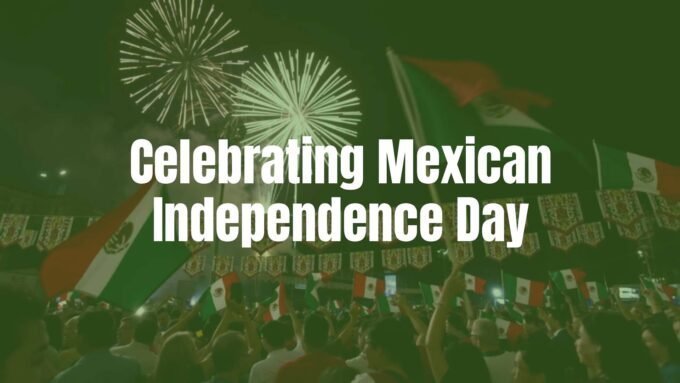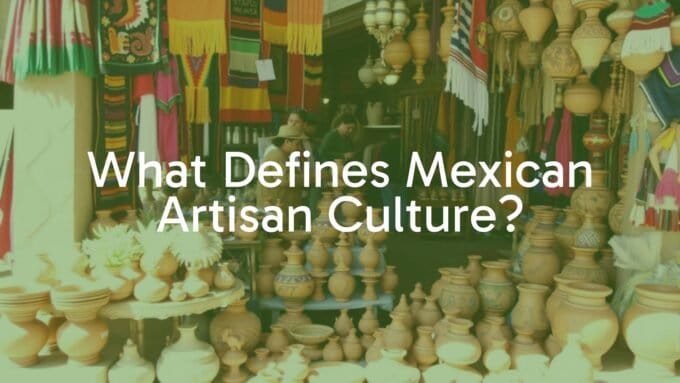Mexican food culture is much more than a set of dishes; it is a living story shaped by history, community, and respect for ancestors. Every plate carries meaning, every meal brings people together, and ingredients hold memories that go back centuries. This deep tradition, recognized by UNESCO, shows a strong bond with the land, a mix of Indigenous knowledge and outside influences, and a clear sense of how food connects people.
From busy street stalls in Mexico City to quiet kitchens in small towns, food sits at the center of daily life. Flavors, textures, and smells act like a language that speaks of identity, care, and joy. This article looks at Mexican food culture, its main traits, its past, core ingredients, and regional styles, explaining why it matters so much to Mexicans and to people who love food around the world.
What Defines Mexican Food Culture?
Mexican food culture is active and deeply rooted in the country’s identity, far beyond basic nutrition. It is a set of practices, traditions, and beliefs that were carefully developed and passed down. Its spirit is communal, grounded in history, and recognized worldwide.
Core Values and Social Significance
Mexican food culture centers on connection, respect, and heritage. Cooking for family and social events supports relationships. Skill in seasoning, called “sazón,” is seen as a gift earned through practice and commitment to the people who will eat. It is not just about taste; it is about care and intention, making each bite a sign of pride and family bonds. Flavor is social, and meals made for special guests or events are often considered the tastiest.
These ideas appear in daily life and in celebrations. During Day of the Dead, people place foods like tamales and mole on altars to feed the spirits of loved ones. Many say that if the living eat this food later, it tastes bland because it already served its spiritual role. Food becomes a bridge to memory, respect, and belief.
Family, Community, and Shared Meals
Family is central in Mexico, and food is its main pillar. Traditional meals strengthen family and community ties, with recipes passed down that tell stories about who people are and where they come from. Many homes include several generations, and eating together is a daily habit that keeps relationships strong. The main meal, the “comida,” is served between noon and 2 p.m. It is usually the largest and most meaningful and is often shared by the whole family. Eating together builds conversation and a strong sense of belonging.
Beyond the home, food also supports community life. Street vendors feed neighborhoods and help keep local traditions active. Cooking for festivals often means feeding hundreds, so people cook in groups. The act of cooking together becomes its own social custom that ties families and neighbors together.

UNESCO Intangible Cultural Heritage Status
In 2010, UNESCO placed traditional Mexican cuisine on its list of Intangible Cultural Heritage of Humanity. This was the first time a national cuisine received this honor. It shows the special value of Mexican food and the human effort behind it-from farming to cooking to family and community customs around meals.
This recognition brings Mexico great pride. It points to the deep roots of the cuisine, built over thousands of years. It also highlights how Mexican food can be complex and symbolic, often tied to festivals. The cuisine keeps changing while still honoring its long history.
Historical Overview of Mexican Cuisine
Mexican cooking grew over many centuries. It reflects Indigenous creativity, Spanish rule, and constant cultural exchange. Each period added flavors and methods that shaped the food people enjoy today.
Pre-Hispanic Tradition and Indigenous Influences
Mexican cuisine began in Mesoamerica. Around 7000 BCE, people hunted and gathered, including wild chiles, long before they planted corn. Roasted agave hearts were a main source of energy. By 1200 BCE, corn was domesticated and nixtamalization-treating corn with an alkaline solution to soften it and improve nutrition-changed how people ate. This made tortillas and other flatbreads possible and set the base for Mexican food.
The Olmec and Maya domesticated maize and developed nixtamalization. Later groups like the Teotihuacanos, Toltec, Zapotec, and Nahua added techniques and ingredients. The Aztec Empire refined a rich cuisine centered on corn, beans, squash, amaranth, chia, avocados, tomatoes, tomatillos, cacao, vanilla, agave, spirulina, sweet potato, cactus, and chiles. Proteins came from turkey, fish, small animals, and insects such as grasshoppers and ant larvae. Plant proteins from chia, beans, and pumpkin seeds were also key. Vegetables included squash, jicama, and edible flowers. Chiles were used in food, rituals, and medicine.
Spanish Colonization and New Ingredients
The Spanish arrived in 1519 and began the Columbian Exchange, changing food systems across the Americas. They brought pigs, cows, chickens, goats, and sheep, which increased meat and added dairy. Wheat arrived for religious and health reasons, and frying in oil or lard was a new technique.
They introduced sugar, rice, onions, garlic, limes, and many fruits and vegetables. Spanish cooking styles spread during the colonial period and after independence. Dishes changed: tostadas, once dried tortillas, were fried; refried beans were cooked in lard. Sweets like alfajores and churros show Spanish and Muslim ties, made possible by sugarcane. Wheat bread, first viewed with doubt by Moctezuma’s emissaries, later became common and led to Mexican breads like bolillos and conchas.

Effects of Middle Eastern, African, and European Culinary Influences
Other cultures also shaped Mexican food. African influence came during the colonial era through the slave trade and the Manila-Acapulco Galleons, bringing plantains and methods that affected rice dishes. Middle Eastern immigrants added sugar and coffee, and the spit-roasted style behind al pastor reflects links to shawarma.
The 19th century brought more Europeans-French, German, Italian-each adding ideas. French trends influenced bread and pastry. Germans helped launch beer brewing. Italians influenced some baked goods. These additions blended with Indigenous bases, creating a popular, diverse cuisine rather than a single style.
How Key Dishes Have Evolved Over Time
Many famous dishes show this long path. Mole blends Indigenous chiles and cacao with Spanish items, showing deep fusion. Tamales, older than the conquest, now vary by region with new fillings and methods while keeping their form. Pozole, a hominy soup with roots in the 16th-century Florentine Codex, moved from ritual use to a festive food, with versions defined by chile sauces.
Tacos come from the practice of using tortillas to hold food and now take many forms. Fillings range from simple to complex street options and mirror local tastes. The torta, made possible by French-style breads in the 19th century, became a staple and adapted to local ingredients. This steady change, mixing old practices with new ideas, keeps Mexican cuisine rich and varied.
Key Ingredients and Staple Foods
Core Mexican ingredients tell the story of the land and its people. These staples are more than items in a recipe-they carry long farming traditions and kitchen skills.
Maize: The Foundation of Mexican Cooking
Corn is the main grain of Mexican cooking. The Olmec and Maya domesticated it long ago, and it still anchors meals even after wheat and rice arrived. People eat it and drink it in many forms.
Most corn is nixtamalized-dried, treated with an alkaline solution, and ground into masa. Masa feeds many dishes, from atole and pozole to tamales and sopes. The most common use is the tortilla, a thin round flatbread that goes with almost every meal and often acts as a utensil. The smell of toasted corn is a familiar scent in many homes.
Beans and Legumes in Daily Meals
Beans are the second pillar. They were domesticated in both Mesoamerica and South America. Pinto and black beans are common. Corn and beans complement each other nutritionally, forming a complete protein when eaten together. This pairing supports large parts of the population.
Beans appear in many forms-boiled, refried (often with lard), in soups, and as sauces for dishes like enfrijoladas. They are simple, nourishing, and deeply traditional.
Chiles: Variety, Uses, and Symbolism
Chiles are native and central to Mexican flavor. Since Mesoamerican times, people have seen them as important as corn and beans. Mexico uses the widest range of chiles for both heat and taste. Many dishes are named for the sauce rather than the meat or vegetable. Think of entomatadas, adobos, pipián, and moles.
While some food is spicy, Mexican cooking also has many subtle flavors. If a dish lacks chile, people often add hot sauce. Chiles even go on fresh fruit and sweets. Many say Mexican identity would feel incomplete without chiles and the salsas made from them. From smoky chipotle to pasilla oaxaqueña and fiery habanero, chiles shape the taste and smell of Mexican food.

Native Fruits and Vegetables
Mexico’s land and climates offer many native fruits and vegetables. Beyond corn, beans, and chiles, staples include squash, avocados, cacao, and vanilla. There are also unique greens and herbs like edible flowers, huauzontle, papaloquelite, and small criollo avocados with edible skin. Vegetables such as zucchini, cauliflower, potatoes, spinach, Swiss chard, and mushrooms are common, along with traditional items like huitlacoche (corn fungus) and nopal (cactus pads).
Tropical fruits-guava, prickly pear, sapote, mango, bananas, pineapple, and cherimoya-are loved in central and southern regions. They are eaten fresh, blended into aguas frescas, or used in savory dishes and desserts. These plants give Mexican food its bright and distinct flavor.
Spanish and Global Imports
Spanish rule brought many new ingredients. Beyond meat and dairy, they added rice, wheat, onions, garlic, and citrus like limes and oranges. European herbs and spices-parsley, thyme, marjoram, bay leaf, and cilantro-became common, especially in Veracruz. Sugarcane led to a wide range of sweets. Olive oil, oregano, cinnamon, and cloves also found a steady place in Mexican kitchens.
Later immigrants added more. Middle Eastern arrivals brought coffee and techniques. The French shaped the bakery scene with new breads. These imported foods blended in, working alongside native ingredients and helping the cuisine keep growing.
Traditional Cooking Methods and Techniques
Mexican cooking methods turn simple ingredients into deep flavors. Many of these ways of cooking are ancient and still shape what people eat today.
Nixtamalization and Tortilla-Making
Nixtamalization is an advanced process created in ancient Mesoamerica. Dried corn is soaked and cooked in an alkaline solution-often limewater-then hulled and ground into masa. This makes corn easier to grind and improves nutrition by increasing available niacin and calcium and improving protein quality. It is a smart method built on old knowledge.
Tortillas come from this masa. Traditionally, women boiled corn, ground it on a metate (stone slab), and cooked tortillas on a comal (flat griddle). While instant masa harina and factories now make tortillas easier to get, hand-made tortillas remain common, especially in rural areas. Making them by hand is a valued skill and gives a taste and texture many people prefer.
Roasting, Steaming, and Other Preparation Styles
Before colonization, people cooked on a comal, used underground ovens and pits, steamed, and boiled stews and soups. Frying and oils were rare. Fats came from fish, seeds, and avocados.
Pit-roasting (píib in Mayan) is old and appears in dishes like cochinita pibil, where food is wrapped in leaves and slow-cooked underground. Steaming is key for tamales. Boiling builds broths and stews like pozole and menudo. After the Spanish arrived, frying in pork fat and olive oil added new textures, leading to dishes like fried tostadas and refried beans. This shows how methods changed over time.
Processing and Labor: Past and Present
In the past, preparing food took a lot of time and was often seen as women’s work. Grinding corn and making sauces in a molcajete required many hours. This effort showed how much value people placed on food and family life.
Today, blenders often replace molcajetes, and instant masa harina makes tortilla-making faster. More people live in cities and fewer work in farming, so processed foods are more common. Still, many prefer handmade foods and old methods. Professional cooking is growing and often highlights traditional techniques and ingredients. Many people work to protect authentic Mexican food in the face of global change.
Regional Diversity in Mexican Food Culture
Mexico covers many climates, landscapes, and Indigenous cultures, and its food reflects this range. Corn, beans, and chiles are everywhere, but each region has its own ingredients, history, and cooking style.
| Region | Hallmarks | Signature items |
|---|---|---|
| Northern Mexico | Ranch culture, grilling, beef and goat, flour tortillas, cheeses | Machaca, arrachera, cabrito, burritos, queso menonita |
| Oaxaca | Indigenous roots, many chiles and herbs, chocolate drinks | Seven moles, tortillas blandas, black beans, Oaxaca cheese |
| Yucatán | Mayan base, pit-cooking (píib), achiote, bitter orange, habanero | Cochinita pibil, papadzules, brazo de reina, seafood salsas |
| Veracruz | Port influence, Afro-Mexican and Spanish mix, herbs and citrus | Huachinango a la veracruzana, plantain dishes, ceviche, rice |
| Mexico City | National mix, street food, fine dining, regional specialties | Tacos al pastor, barbacoa, birria, carnitas, many moles |
Northern Mexico: Techniques and Typical Dishes
Northern cooking differs from the south, a split that goes back to pre-Hispanic times. The dry land led to hunter-gatherer groups and less farming. Europeans later found the area good for cattle, goats, and sheep, so meat-especially beef-became central. You will find machaca (dried shredded beef), arrachera (skirt steak), and cabrito (roasted young goat), common in Monterrey and Nuevo León.
Grilling is the key method and reflects ranch life and outdoor cooking, often done by men. The region also developed many cheeses, like queso fresco, ranchero, and queso menonita from Chihuahua. Wheat is common, especially large flour tortillas, which helped create burritos in border cities like Ciudad Juárez. Dry weather led to preservation methods such as dehydration and canning, which shape chile flavors.
Oaxaca: Moles and Unique Traditions
Oaxaca, called “The Land of Seven Moles,” has a cuisine known for depth and strong Indigenous roots. With fewer disruptions after conquest, foodways mixed earlier and kept many original forms. Its varied landscapes produce many foods, from valley vegetables to seafood and tropical fruits along the coast. Mixtec and Zapotec cultures have a big influence.
The seven Oaxacan moles-negro, amarillo, coloradito, mancha manteles, chichilo, rojo, and verde-are famous. These sauces can include many ingredients: different chiles, spices, nuts, and seeds. Corn is the main grain, and tortillas called “blandas” go with most meals. Black beans are common in soups or in enfrijoladas. Regional chiles like pasilla oaxaqueña, amarillos, and chilhuacles, plus herbs like hoja santa, give distinct flavors. Chocolate, often hand-ground with almonds and cinnamon, is usually drunk rather than eaten. Oaxaca also made its own style of stringy cheese based on ideas from mozzarella.
Yucatán: Mayan Heritage in Cuisine
The Yucatán Peninsula has a distinct cuisine rooted in Mayan food and shaped by Caribbean, Central Mexican, European (especially French), and Middle Eastern influences. Corn is basic and often drunk as pozol or keyem. Achiote (annatto) adds a red color and a spicy, warm aroma. Recados (seasoning pastes), like recado rojo or blends with habanero, flavor dishes such as cochinita pibil.
Habaneros appear mostly as condiments. Bitter oranges add a sour note to broths, marinades, and drinks. The Mayan method “píib” cooks foods wrapped in banana leaves in a pit. On the coast, fish like Mero and Esmedregal are common, often served with a salsa of x’catic pepper and achiote. Classic dishes include brazo de reina (chaya tamale) and papadzules (egg tacos in pumpkin seed sauce). Honey, used before the Spanish arrived, lives on in drinks like the honey liqueur xtabentun.
Veracruz and Seafood Specialties
Veracruz food blends Indigenous, Afro-Mexican, and Spanish ideas, reflecting its role as a major port. Indigenous parts include corn, vanilla (native to the state), and herbs like acuyo and hoja santa. Tropical fruits-papaya, mamey, and zapote-are common, along with citrus and pineapple from the Spanish. European herbs such as parsley, thyme, marjoram, and bay leaf flavor dishes like Huachinango a la veracruzana, a famous red snapper plate.
African influence came through the Caribbean, bringing foods and methods first carried to Africa by the Portuguese, such as plantains. Seafood is central on the Gulf Coast, with dishes like pulpo, chilpachole (spicy crab soup), and ceviche. Rice is more common here than in many other regions, though corn dishes like garnachas are still found in mountain areas.
Mexico City: Urban Food Traditions
Mexico City brings together foods from across the country and beyond. Most ingredients arrive from other regions, including tropical fruits. Street food is everywhere, with taco stands and small diners offering many choices.
You can find specialties from many states: barbacoa from the highlands, birria from the west, cabrito from the north, carnitas from Michoacán, and moles from Puebla and central Mexico. The city is also a center for fine dining. Chefs trained in international styles often use Mexican flavors in creative ways and sometimes focus on pre-Hispanic dishes, including insects. Tacos and tortas are daily staples, and many shops sell large stuffed sandwiches.
Signature Dishes and Their Cultural Stories
Some dishes have become symbols of Mexican identity. They carry stories about history, community, and custom.
Tortillas, Tamales, and Tacos
These three are pillars of Mexican food and show the lasting impact of corn and Indigenous cooking.
Tortillas: The corn tortilla, born from nixtamalization, works as a utensil, a wrapper, and a basic side at nearly every meal. It is tied to Mesoamerican farming and stands for nourishment and continuity. While corn tortillas lead, the north often uses wheat tortillas. Making and sharing tortillas builds family ties and keeps traditions alive.
Tamales: Tamales go back to ancient times and stand for community and celebration. Like mole, they take time and many hands, which suits big gatherings. Wrapped in corn husks in highlands and deserts and in banana leaves in the tropics, they vary by region in fillings and techniques. They are linked to events like Candlemas and carry tradition from one generation to the next.
Tacos: The taco, known worldwide, likely comes from a Nahuatl word meaning middle or half, or from using tortillas to pick up food. A taco is anything wrapped in a tortilla, which makes it flexible and everyday. Fillings range from meats to mushrooms, potatoes, and beans. Tacos are common on the street, eaten early or late rather than as the main family meal. Pork is popular in the center and south, beef in the north, and seafood on the coasts. Tacos show the joy and adaptability of Mexican cooking.

Mole: Varieties and Regional Interpretations
Mole, from the Nahuatl “mōlli” (sauce), stands among Mexico’s most complex dishes. It is a cooked chile sauce that defines central and southern cooking and is often saved for holidays and big moments. Mole poblano is famous, but there are many versions using dried chiles (ancho, guajillo, pasilla, chipotle), spices, nuts, seeds, and sometimes chocolate.
People serve mole at Christmas, Easter, Day of the Dead, birthdays, baptisms, weddings, and funerals. In Oaxaca, seven classic moles tell local stories. Mole often goes with chicken, but also with pork, turkey, or beef. Its careful preparation and meaning make it a true expression of Mexican food culture.
Street Food and Urban Markets
Mexican street food is lively and open to everyone. It offers a wide range of flavors at good prices and fits busy city life. While regulars may form close bonds with vendors, street food is mainly about quick, tasty eating.
Markets and street stands sell tacos, quesadillas, pambazos, tamales, huaraches, and tortas. Roasted chicken is common because many homes do not have ovens. Tacos al pastor show cultural mixing with spit-roasting methods from the Middle East. People also enjoy elotes, soups, and many snacks. Alongside the food, vendors sell drinks like aguas frescas, tejuino, and tepache, rounding out the experience.
Beverages in Mexican Food Culture
Mexican drinks reflect the same depth as the food. They range from ancient ritual beverages to modern favorites.
Traditional Non-Alcoholic Drinks: Atole, Horchata, and Agua Fresca
Non-alcoholic drinks are part of everyday eating and often come from Indigenous or colonial roots that Mexico made its own.
- Atole: A warm drink made from masa or corn flour with water or milk. It is common in cold weather and during Christmas and Day of the Dead. It can be flavored with fruit, chocolate, vanilla, cinnamon, or chiles like cascabel in Michoacán. It is thick, comforting, and nourishing.
- Horchata: A rice-based drink brought by the Spanish and now loved across Mexico. Rice is blended with water, cinnamon, and sometimes vanilla, then strained and sweetened. It is creamy, sweet, and cooling.
- Agua Fresca: Light drinks made by blending fruit with water and sugar. Sold on streets and in juice bars, and served with meals. Flavors include jamaica (hibiscus), tamarind, watermelon, and many seasonal fruits.
Other drinks include tepache (fermented pineapple), pozol (a corn drink, sometimes fermented, common in Chiapas and Yucatán), and café de olla, coffee brewed with cinnamon and raw sugar.
Alcoholic Drinks: Mezcal, Tequila, and Pulque
Mexico also has many traditional alcoholic drinks linked to place and custom.
- Mezcal: A family of agave spirits known for smoky notes. All tequila is mezcal, but not all mezcal is tequila. Many agave types can be used, and Oaxaca is famous for small-scale mezcal production. People often sip it neat to enjoy its layers of flavor.
- Tequila: A type of mezcal made from at least 51% blue agave in set regions around the town of Tequila in Jalisco. It is known worldwide, used in cocktails like the margarita or sipped straight. It is closely tied to Jalisco’s food culture.
- Pulque: An ancient drink from fermented maguey sap. It has pre-Hispanic roots and was once sacred. Though less common than tequila or mezcal, it remains important in central Mexico. It is milky, slightly thick, and unique.
Other spirits include aguardiente and charanda (a sugarcane spirit from Michoacán). Wine and beer are also made and enjoyed across the country.
Chocolate: From Ancient Rituals to Modern Treats
Chocolate has a deep place in Mexican food. The word comes from Nahuatl “xocolatl.” The Maya grew cacao and made a foamy, bitter drink called xocoatl, often with vanilla, chiles, and achiote. Before Europeans arrived, chocolate was mainly a warm, syrupy drink, sometimes sweetened with honey, used for medicine and in rituals.
After contact with Europe, chocolate spread and took many forms. In Mexico, traditional drinking chocolate remains common, especially Oaxacan chocolate, often hand-ground with almonds and cinnamon. Tejate is another classic cacao-based drink. People also enjoy chocolate in sweets and as a topping or dip, but its role as a drink with long history still stands out.
Festivals, Celebrations, and Food
In Mexico, food takes center stage in holidays and local fiestas. Each event has its own dishes that carry cultural and spiritual meaning.
Role of Food in Major Holidays and Local Fiestas
Food and celebration go together. Large meals feed many guests and require teamwork, which strengthens social bonds. The cooking itself becomes part of the party and ties families and communities together.
On Day of the Dead (Día de los Muertos), food plays an important role in honoring ancestors. People place favorite dishes-like tamales and mole-on altars to greet the spirits of loved ones. This links the living to their past. Candlemas (La Candelaria) also features tamales, showing how food connects faith and daily life.
Christmas and Easter have their own foods, too. Since the 1980s, people have more often chosen dishes like barbacoa, carnitas, and mixiotes for special days, reflecting changes in costs and the spread of ready-made options. Still, sharing these foods with others remains central, keeping traditions alive.
Special Occasion Foods and Ritual Dishes
Some dishes are saved for big events because of their complexity and meaning. Mole, especially mole poblano in central Mexico, is one of the most important. It appears at Christmas, Easter, Day of the Dead, birthdays, baptisms, weddings, and funerals.
Tamales are another key festive food, with many regional varieties. In central Mexico, people also serve barbacoa (slow-cooked meat, often in pits), carnitas (fried pork), and mixiotes (meat or fish cooked in maguey leaves).
Ritual foods can also mark the calendar. Rosca de Reyes, a sweet bread shaped like a crown and decorated with dried fruit, is served on Three Kings Day and sometimes hides a small figure of baby Jesus, bringing families together around a shared tradition.
Mexican Food Beyond Mexico
Mexican food has spread around the globe. In leaving its home, it has changed to fit new places and tastes-sometimes closely, sometimes loosely.
Expansion and Adaptation in the United States
Mexican food in the U.S. grew through migration, exchange, and business. After the Mexican-American War, Mexican cooking continued in the Southwest, where Native Americans and Hispanos kept local traditions.
As Mexican communities moved, regional dishes like barbacoa and birria traveled with them. Many Americans met “Mexican” food through simplified, commercial versions. Tex-Mex formed in Texas from Mexican and Anglo influences and tends to use yellow cheese, beef, and cumin. Dishes like chili con carne and chimichangas reflect U.S. tastes, often with milder spice levels.
Fast-food chains like Taco Bell, founded in 1962, spread a convenient version of “Mexican” food-hard-shell tacos and other handheld items-across the country. While this is different from regional cooking in Mexico, it shaped how many people first saw the cuisine.
In recent years, more diners have looked for traditional flavors. A growing Mexican-American population and travel to Mexico helped this change. Food trucks and restaurants now serve regional specialties in many cities. Chefs like Carlos Gaytán and Dominica Rice-Cisneros raise the profile of Mexican food with careful methods and respect for tradition, challenging the idea that it is only cheap and casual.
Perceptions and Fusion Cuisine Worldwide
Outside the U.S., Mexican food inspires many kitchens. Core ingredients-chiles, corn, beans, avocados-mix well with other traditions.
Fusion dishes are common. Korean tacos took off in Los Angeles and spread to other cities. The sushi burrito-mixing Japanese and Mexican ideas-became popular in California and beyond. In Mexico, cooks also blend global styles with local flavors, for example, sushi with mango-tamarind sauces or serrano-spiked soy.
Views of Mexican food keep changing. While Tex-Mex and fast-food styles still shape many first impressions, more people now seek the real range of regional dishes and complex flavors. Chefs, cultural groups, and travel help people see the depth and variety of Mexico’s true culinary heritage.
Frequently Asked Questions about Mexican Food Culture
Mexican food culture is a wide subject that often leads to questions about its roots, what counts as authentic, and how it differs from related cuisines. Here are answers to common questions.
How Did Mexican Cuisine Evolve?
Mexican cuisine grew over thousands of years through Indigenous ideas and later influences. The Olmec and Maya domesticated corn, beans, and chiles and developed nixtamalization. Other Indigenous groups, including the Aztecs, added methods and ingredients, building a strong base.
The Spanish conquest in the 16th century brought animals (beef, pork, chicken, goat, sheep), dairy, wheat, rice, sugar, olive oil, and European herbs and spices. Old and New World foods mixed to form a mestizo cuisine that shapes modern Mexican food. African, Middle Eastern, and other European influences later added plantains, certain spices, and bread styles. Mexican cooking keeps its Indigenous core while welcoming change, which gives it its rich character today.
What Foods Are Originally from Mexico?
Many foods that changed global cooking began in Mexico. Core native foods include:
- Corn (Maize): The base crop, domesticated thousands of years ago.
- Chili Peppers: Native to Mexico, used for heat and flavor.
- Beans: Many common bean types were domesticated in Mesoamerica.
- Squash: Including pumpkins and zucchinis.
- Avocados: Now popular worldwide.
- Tomatoes and Tomatillos: Essential for salsas and sauces.
- Cacao: The source of chocolate, first a drink.
- Vanilla: A classic pre-Columbian flavor.
- Agave: Used to make tequila, mezcal, and pulque.
- Amaranth and Chia: Ancient grains and seeds.
- Sweet Potato: A native tuber.
- Nopal (Cactus pads) and Huitlacoche (Corn fungus): Special native foods.
- Turkey: Domesticated in Mesoamerica.
- Guava, Papaya, Sapote, Pineapple, Cherimoya: Many tropical fruits of the Americas.
These ingredients sit at the heart of Mexican cooking and give it its taste and nutrition.
What Sets Authentic Mexican Food Apart from Tex-Mex?
Authentic Mexican food and Tex-Mex come from different histories and cooking habits. Both are tasty, but they are not the same:
- Origins and Influences: Mexican food grows from Indigenous traditions with Spanish influence and smaller inputs from other groups. Tex-Mex formed in Texas from Mexican and Anglo roots and was shaped for U.S. tastes and ingredients.
- Staple Ingredients: Mexican cooking relies on nixtamalized corn, many kinds of fresh and dried chiles, and beans. Tex-Mex often uses more wheat flour (tortillas, burritos), fewer and milder chiles, and more yellow cheese, beef, and cumin.
- Cooking Techniques: Mexican kitchens use nixtamalization, steaming (tamales), pit-roasting (cochinita pibil), and comal cooking. Frying is present but not the main method. Tex-Mex tends to fry more and use bigger, cheesier combinations.
- Dishes: Many dishes thought of as “Mexican” in the U.S. are Tex-Mex, like chili con carne, chimichangas, and V-shaped hard-shell tacos. Mexican regional cooking includes moles from Oaxaca, cochinita pibil from Yucatán, central Mexican barbacoa, and coastal seafood dishes.
- Flavor Profile: Mexican food balances many flavors through slow cooking, complex sauces, and careful use of chiles and herbs. It can be spicy, but also earthy, sour, and aromatic. Tex-Mex leans toward bold, cheesy, and meaty combinations aimed at broad appeal.
At its core, authentic Mexican food celebrates regional variety, history, and Indigenous roots, while Tex-Mex is a distinct cuisine of the American Southwest that grew from Mexican beginnings.













Leave a comment